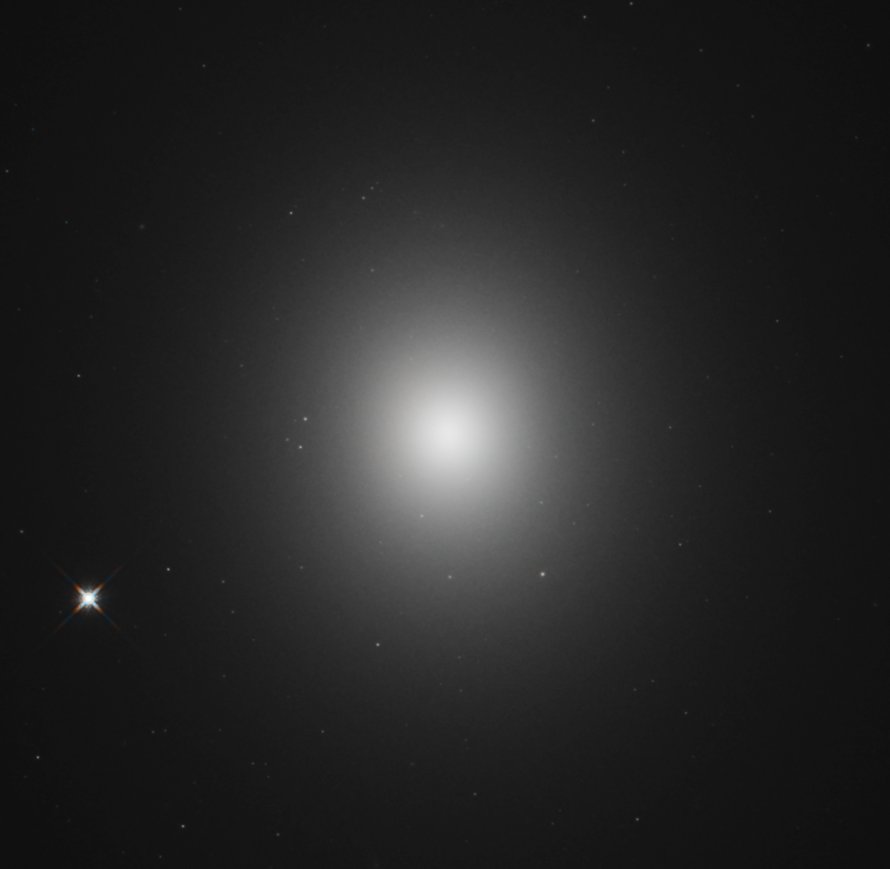M49 (NGC 4472)
Messier 49 (NGC 4472) is an elliptical galaxy located in the constellation Virgo in the Virgo Cluster of galaxies. M49 is 56000000 light years away from Earth.
M49 is best viewed during late spring, is magnitude 9.4, and can be viewed with binoculars. M49 is 10' x 8' in apparent size. For reference, the full moon is 30'.
Observing difficulty: Hard
- Name:
- Type:
- elliptical galaxy
- Constellation:
- Virgo
- NGC or IC:
- NGC 4472
- Magnitude:
- 9.4
- Viewing:
- binoculars
- Size:
- 10' x 8'
- Distance (light years):
- 56000000 LY
- RA:
- 12h 29.8m
- Dec:
- 8 1'
- Season:
- late spring
- Galaxy group:
- Virgo Cluster
- Messier Marathon #:
- 63
* The naked eye can see up to magnitude ~7-8 objects under ideal dark sky conditions.
Unveiling the Mysteries of an Elliptical Galaxy
Messier 49 (M49) is a supergiant elliptical galaxy that's part of the Virgo Cluster of galaxies, offering us a glimpse into the nature and evolution of galaxies in our universe. This article delves into the various characteristics, historical aspects, and viewing details of this spectacular celestial object.
Historical Overview
Discovered by Charles Messier in 1771, M49 was the first member of the Virgo Cluster to be identified. Its recognition marked an important step in our understanding of galaxies and their distribution in the universe. In the years since its discovery, M49 has continued to be the subject of detailed study and has revealed a wealth of astronomical phenomena.
Physical Characteristics and Magnitude
M49, located approximately 55.9 million light-years away from Earth, is one of the largest and most luminous galaxies in the Virgo Cluster. It has an absolute magnitude of -23.2, making it brighter than our own Milky Way galaxy. M49 spans about 157,000 light-years in diameter, which is larger than our galaxy's size.
One of the unique features of M49 is its abundant globular clusters. The galaxy hosts an estimated 5,900 globular clusters, vastly more than the 150-200 that orbit the Milky Way. Furthermore, M49 is known to have a supermassive black hole at its core, contributing significantly to the galaxy's overall mass and luminosity.
Scientific Significance
M49 is a valuable source of information about galaxy formation and evolution, as well as the behavior of globular clusters in large galaxies. Studies of the galaxy's globular clusters have provided insights into their age, composition, and dynamics, enhancing our understanding of these intriguing objects. The supermassive black hole at its center also makes M49 a fascinating subject for studies of galactic nuclei.
Locating and Observing M49
M49 resides in the constellation of Virgo and can be best observed during the spring months when Virgo is high in the sky. It's found about 4 degrees southwest of the star Epsilon Virginis. Its brightness of magnitude 8.4 makes it possible to spot M49 with a small telescope or binoculars under dark skies. However, due to its distance, it appears as a faint, diffuse patch of light.
Higher power telescopes, especially those with larger apertures, may show the galaxy's oval shape, but detailed features are difficult to discern for amateur observers due to its great distance. Despite this, the very act of observing such a distant and massive galaxy can be a thrilling experience for any astronomy enthusiast.



